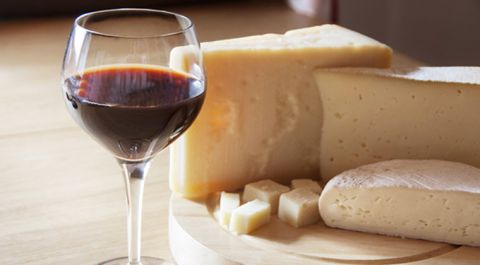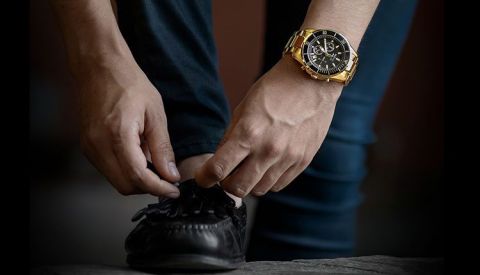Best sports for elderly people
2025-03-31 14:11:30
Aging is an inevitable part of life, but it does not mean
you have to slow down. Engaging in regular physical activity is
essential for maintaining health, vitality, and independence as we age.

For elderly people, sports and physical activities
can significantly improve cardiovascular health, muscle strength,
flexibility, balance, and mental well-being. The key is to choose
activities that are enjoyable, safe, and suitable for individual fitness
levels. Here is a guide to some of the best sports for elderly people
to help them stay active and healthy.
The Importance of Physical Activity for the Elderly
Regular
physical activity is beneficial for people of all ages, but it is
particularly crucial for the elderly. The advantages of staying active
include:
Improved Cardiovascular Health: Regular exercise helps to maintain heart health and reduce the risk of cardiovascular diseases.
Increased
Muscle Strength and Flexibility: Physical activities help to preserve
muscle mass, improve flexibility, and maintain mobility.
Enhanced Balance and Coordination: Exercise can reduce the risk of falls by improving balance and coordination.
Better
Mental Health: Physical activity can reduce symptoms of depression and
anxiety, improve mood, and enhance cognitive function.
Weight
Management: Staying active helps to maintain a healthy weight, reducing
the risk of obesity-related conditions such as diabetes.
social
Interaction: Participating in group sports or fitness classes provides
opportunities for socialization, which can reduce feelings of isolation
and improve overall well-being.
Best Sports and Activities for Elderly People
1. Walking
Walking
is one of the most accessible and beneficial forms of exercise for
elderly individuals. It requires no special equipment, can be done
anywhere, and is gentle on the joints. Regular walking helps improve
cardiovascular health, strengthens muscles, and enhances mental
well-being.
Tips:
Start with short walks and gradually increase the duration. Wear
comfortable shoes and walk on even surfaces. Consider walking with a
friend or joining a walking group for added motivation.
2. Swimming and Water Aerobics
Swimming
is an excellent low-impact exercise that is easy on the joints while
providing a full-body workout. Water aerobics offers similar benefits
with added resistance from the water, which helps to strengthen muscles
without the risk of injury.
Tips:
Look for classes designed specifically for seniors. Ensure the pool has
easy access and is at a comfortable temperature. Start with shorter
sessions and gradually increase the intensity.
Yoga and Tai Chi
Yoga
and Tai Chi are gentle exercises that focus on flexibility, balance,
and mindfulness. These activities can help improve posture, reduce
stress, and enhance overall physical and mental well-being.
Tips:
Choose classes that are tailored for seniors or beginners. Use props
and modifications to suit your flexibility and strength levels. Practice
regularly to see the best results.
4. Cycling
Cycling,
especially on a stationary bike, is a low-impact exercise that can
improve cardiovascular health, build muscle strength, and enhance joint
mobility. Its an excellent option for those with joint issues or
arthritis.
Tips:
Start with a stationary bike to build confidence and strength before
transitioning to outdoor cycling. Ensure your bike is properly adjusted
to avoid strain. Consider joining a cycling group for social
interaction.
5. Golf
Golf
is a fantastic way to stay active while enjoying the outdoors. It
combines walking with strategic thinking and coordination, making it a
great exercise for both body and mind.
Tips:
Use a golf cart if walking long distances is challenging. Focus on
gentle swings and avoid overexertion. Play with friends to make the
experience more enjoyable.
6. Dancing
Dancing
is a fun and social way to stay active. It improves cardiovascular
health, balance, coordination, and mental acuity. There are many styles
of dance to choose from, including ballroom, line dancing, and even
Zumba classes designed for seniors.
Tips:
Find a class that matches your interest and fitness level. Start with
shorter sessions and gradually increase your endurance. Dont worry about
perfection focus on having fun and staying active.
7. Strength Training
Strength
training helps to preserve muscle mass, improve bone density, and
enhance overall strength and endurance. It can include exercises with
free weights, resistance bands, or body-weight exercises.
Tips:
Start with light weights or resistance bands and gradually increase the
intensity. Focus on proper form to avoid injury. Consider working with a
trainer to create a personalized program.
8. Pickleball
Pickleball
is a low-impact sport that combines elements of tennis, badminton, and
table tennis. It is easier on the joints than traditional tennis and
provides a good cardiovascular workout.
Tips:
Use proper footwear to avoid slipping. Start with shorter games and
gradually increase the duration. Play doubles to reduce the amount of
running required.
9. Bowling
Bowling
is a social and enjoyable activity that promotes coordination, balance,
and flexibility. Its an excellent way to stay active while engaging in
friendly competition.
Tips: Use a
lighter ball to avoid strain. Focus on proper form to prevent injuries.
Join a bowling league for regular play and social interaction.
10. Gardening
It
is a physical activity that combines aerobic exercise with muscle
strengthening. It involves bending, stretching, digging, and lifting,
which can enhance overall fitness.
Tips:
Use ergonomic tools to reduce strain. Take regular breaks and avoid
overexertion. Enjoy the mental health benefits of being outdoors and
connecting with nature.
Safety Tips for Elderly Athletes
While
engaging in sports and physical activities is beneficial, its essential
to do so safely. Here are some tips to help elderly individuals
exercise safely:
Consult
a Healthcare Provider: Before starting any new exercise program, its
important to consult with a healthcare provider to ensure the activities
are suitable for your health condition.
Start
Slowly: Begin with low-intensity exercises and gradually increase the
duration and intensity. This helps to prevent injuries and build
endurance.
Warm Up and Cool Down: Always start with a warm-up to prepare your muscles and joints, and finish with a cool-down to help your body recover.
Stay Hydrated: Drink plenty of water before, during, and after exercise to stay hydrated.
Listen
to Your Body: Pay attention to how your body feels during and after
exercise. If you experience pain, dizziness, or shortness of breath,
stop immediately and consult a healthcare professional.
Wear
Appropriate Gear: Use proper footwear and clothing to ensure comfort
and prevent injuries. For outdoor activities, wear sun protection such
as hats and sunscreen.
Stay Social: Exercising with others can provide motivation, make the activity more enjoyable, and offer social benefits.
The Social Benefits of Sports for the Elderly
Beyond
physical health, participating in sports and physical activities offers
significant social benefits for elderly individuals. Engaging in group
activities can reduce feelings of loneliness and isolation, which are
common among older adults. Sports provide opportunities to meet new
people, form friendships, and build a sense of community. These social
interactions can improve mental health, enhance the quality of life, and
even increase longevity.
Staying
active through sports and physical activities is crucial for
maintaining health and well-being in the golden years. The best sports
for elderly individuals are those that are enjoyable, safe, and tailored
to their fitness levels. By choosing the right activities and following
safety guidelines, elderly people can reap the physical, mental, and
social benefits of an active lifestyle.










